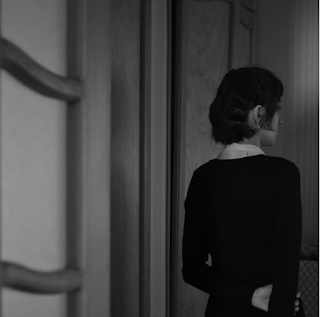
In Jekyll and Hyde, Stevenson sets up a strong contrast between the primitive, animalistic self and the civilized, respectable self.
One way to understand ‘primitive’ is to think of a toddler or small animal, or basic human urges – greedy, selfish, not polite. The primitive self doesn’t understand social conventions or taboos (=things you shouldn’t do). It’s easily frightened, quick to fight. In adults, there are basic lusts and desires. No understanding of law.
This is represented by Mr Hyde. He is the personification not just of evil, but of ‘primitive’ human urges. He is a very extreme version of something we all have inside, but which we keep hidden. In Freudian psychology, this selfish, basic part of our nature is called the Id. The Id is usually kept in balance with the other parts of our nature. We may want to be greedy, lustful, rude, etc, but we have been brought up to be polite and have self-control, and respect other people, not just ourselves. We (unlike Mr Hyde) are civilized and ‘respectable’. We care what society (other people) think of us. In Jekyll and Hyde, society and civilization are represented (‘personified’) by Lanyon and Utterson (among others).
Some people would argue that this ‘veneer [a thin layer] of civilization’ is not as strong as the basic urges that rage underneath. Our primitive self is always trying to break out. We have urges or impulses which we have to fight and keep under control. This constant battle between primitive and civilized self causes tension. COMPARE to the inner tension between good and evil in Macbeth, and animal imagery used to describe base (wrong) primitive acts like murder.
Think about how violently the respectable characters in the book always want to stamp Hyde out. They dislike him violently, and even want to kill him. This contrast shows the conflict between primitive urges and civilization.
The Problem of Evolution: Another way to understand Animalistic and Primitive Imagery
The Victorian perspective (AO4 Social and Historical Context)
Before Stevenson wrote, Charles Darwin discovered that man was a form of ape, a type of animal. This was a big problem. Animals, and ‘nature’ were thought of as brutal: ‘nature red in tooth and claw’ (Tennyson). Also, if man were a type of animal, he could not be ‘made in God’s image.’ This shocked Victorian sensibilities and let to a crisis of faith and of identity. Stevenson shows this tension (that existed in people’s minds), literally, by showing how people are terrified by Hyde’s ape-like, primitive behaviour. In Hyde, Stevenson shows us the horror of man-as-ape in contrast to the more pleasing idea of man as god-like. The man-ape is a trope (typical image) of late Victorian literature, especially in the horror genre.
In the novel, religion and science are strong themes which are often in conflict. Jekyll’s ‘fantastic’ experiments are so shocking to the respectable, conventional Dr Lanyon that they kill him, and indeed, end up killing Jekyll. At the darkest moments of the novel there are many appeals to God, none of which seem to be answered. There is no happy ending in this book. The dark experiments of science only end in death, destruction and despair.
